The F-35 Joint Program Office (JPO) is actively addressing corrosion challenges within the F-35 fleet, focusing on maintaining the aircraft’s long-term mission capability and operational reliability, according to a statement from the F-35 Joint Program Office Public Affairs.
One of the most visible issues is the discoloration of the aircraft’s surface, which can be observed after deployments, particularly in harsh environments. The JPO clarified that this discoloration does not indicate structural damage or reduced stealth capability.
The statement notes, “Much of what the public sees as damage, such as the discoloration on jets returning from deployment, does not represent a degraded aircraft.”
During shipboard operations, F-35s are often subjected to a range of environmental stressors, including “frequent exposure to sea water, contamination from grease, oil, and other fluids, as well as close proximity to jet blast and rotor wash.” These conditions can cause the aircraft’s coatings to appear worn or discoloured, but the JPO stressed that the underlying integrity remains intact. “While it may look severe, these marks do not indicate a loss of coating integrity nor stealth performance,” the office stated.
To combat these challenges, the JPO has developed a new coating for the F-35, aimed at “significantly reduc[ing] or eliminat[ing] discoloration, enhance[ing] durability, and extend[ing] the coating’s service life.” This coating will be introduced to fielded aircraft as part of routine maintenance, “similar to how coatings are restored on commercial and military jets.” The JPO described the initiative as part of a broader effort to support the F-35 program’s “long-term, adaptive sustainability strategy.”
The underlying cause of corrosion is not always visible. As the JPO explained, “Corrosion doesn’t come with flashing alarms or immediate system failures—it works quietly and gradually, often concealed beneath coatings or hidden within seams, joints, and fasteners.” The complex airframe, made from a blend of aluminium, titanium, and carbon composites, faces risks of galvanic corrosion, especially when dissimilar metals interact in humid, salty environments.
The JPO has made corrosion control a priority, implementing a coordinated strategy to minimise risks across the fleet. Initially, the program lacked a comprehensive framework, leaving maintenance teams “playing ‘catch-up’ as the fleet matured.” However, recent improvements include a more structured approach, supported by a growing team of engineers and technical experts. The aim is to ensure that “every jet [is] up to standard and [has] an improved supply chain of consumables, ensuring long-term readiness and mission capability.”
The office also highlighted the often-overlooked nature of corrosion management. “The F-35 JPO’s battle with corrosion improvement and management is not dramatic. It does not make headlines like a successful sortie or a new weapons integration. But it is vital. It is ongoing. And it is being won thanks to the dedication of maintainers, depot teams, and engineers who are working tirelessly to protect the world’s most advanced fighter aircraft.”
Through these persistent efforts, the F-35 Joint Program Office aims to keep the fleet “not just capable, but reliable, ready to dominate the skies for decades to come.”


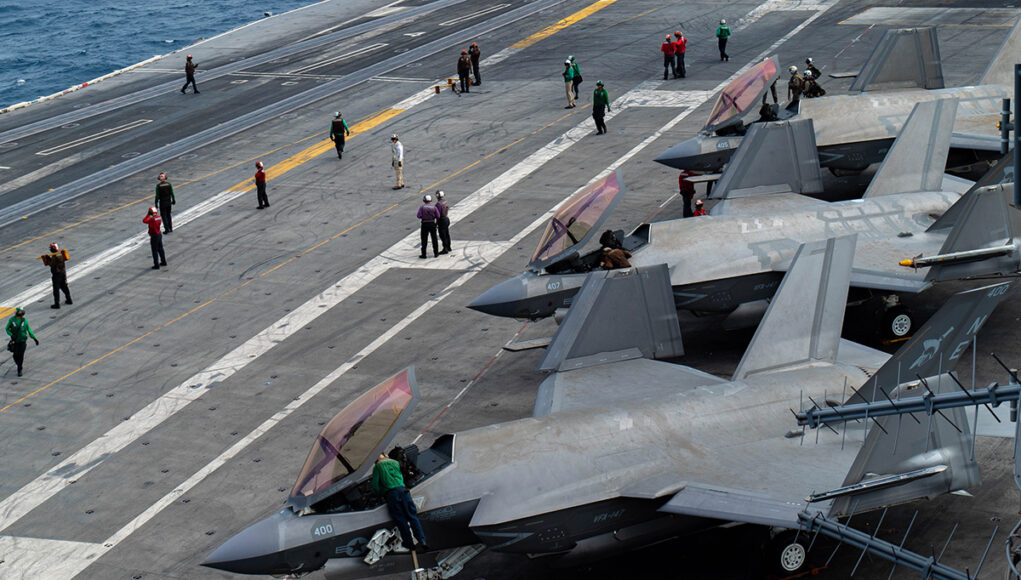
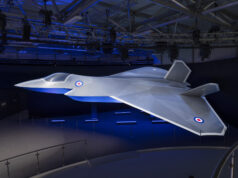

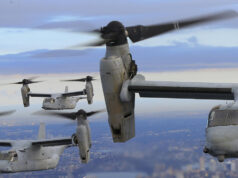


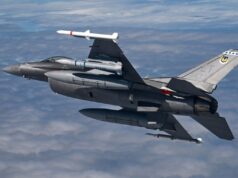

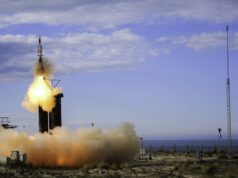
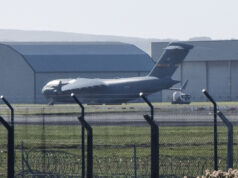


Oh, how long they been in service and only now its address the issue, the USA hides things, restricts things as when it suits them. And its all about control and adding more cost.
It didn’t happen with the Harrier.
The Falklands War: 76 days starting on 2nd April 1982 when the Argentine invaded proved the BAe Sea Harrier to be a superb aircraft. Jets landing on the 2 Royal Navy carriers being re-armed and refuelled on flight decks often washed by sea water. Not on mission by any aeroplane was lost due to unserviceability.
A new aircraft that lands vertically with a massive air-brake type lid when brand new might look well BUT what about when it has seen battle damage and has to land on vertically! That is assuming the US gives the weapons codes.
At £100m per aircraft it is an expensive fast jet that can’t do much else.
The Royal Air Force and european nations will do well to source away from the US.
Agreed, but are Europeans weapons as good as the US ones, made in the numbers and with back up and ammo as well? The US will always do what right for it, it just chucks money at defence in way no one else can. The STOL F35 was bad idea, we chose to not fit cats to the carriers to save money but really it has not done that we had build Crowsnest, buy an reduced range F35B , we never seem to get it right.
Hi Martin,
The US will always make money. They have emerged from every conflict a lot better off than when they engaged in it.
The whole point of the F-35 is that it is a stealth fighter – the clue is in the name.
Should there be any whiff that the US might not update the weapons codes then that £100m stealth is just a piece of rather fast aluminium. The risk is too great.
There is likely to be a war coming. We are vastly under-prepared on every level – just as we were in 1938/9.
We need fighters that work though perhaps if we need to sacrifice stealth for something that works then so be it.
The Typhoon is built in a UK coalition and is regularly updated. That’d give our men a chance.
It is 2232 hours so Trump is probably only just thinking up the problems he will cause tomorrow. We need to reinforce our reliable allies and re-arm.
We do not have a leader and neither does the US. The MoD hardly gives me any confidence either.
“ The complex airframe, made from a blend of aluminium, titanium, and carbon composites, faces risks of galvanic corrosion, especially when dissimilar metals interact in humid, salty environments”
Hmme well all of this is know and done science. All you need is a table of redux potentials and you know what doesn’t mix.
This should never have happened.
One of the reasons why *non conductive* composites are useful to break a galvanic bridge. Carbon composites are not so useful as carbon is a conductor…..
Should never have happened? You know all aircraft can get corrosion, difference is most aren’t totally covered in a stealth coat
Sort of true.
Except that two versions were specifically known to need to be maranized.
F35C has no other reason to exist than aircraft carriers.
F35B was RN & USMC driving the development.
No surprise, this is the cost of doing business with 5th gen aircraft.
The US Marines have already outlined staffing increases to deal with this (in addition to growling squadron strength from 10 to 12 during the F-35 transition) in their Aviation Plan 2025, which was released in January:
“To support the future increase to 12 PAA per squadron, each squadron will undergo a manpower re-alignment
that seeks to fill gaps in certain military occupational specialties (MOS) within the maintenance department.
Squadron structure will increase by two pilots and 25 Marines in the maintenance department with a
heavy focus on corrosion control. Our primary focus is maintaining manpower to support the Tactical Aviation
transition plan. Once the transition plan is complete, this additional structure will be laid in as squadron PAA
grows from 10 to 12.”
Would have thought this had been considered and sorted pretty much during the design stage!
A major fail that it wasn’t properly dealt with at the earliest stages. This smacks of ‘adding system security’ to already developed software! It is about as logical a way of dealing with it. You might as well say lets see which bits actually corrode and we will deal with that dynamically…..or how does a hacker get in….lets patch that!
All you need to do is list which bits touch which other bits and then have table of redux potentials for each bit. You can then have a heat map of where the issues [largest delta redux] are which you can then fix [change materials] or mitigate using insulating pastes and/or passivating areas or whole surfaces.
Other things are designed like this…..yes , really!
This has been known about for years, it’s been in an article on here at least two years back. I know you are stating fundamentals based in material science but it is also true it is not an exact science, it is also a fact that despite knowing the science and modelling predictions of how it will work out in active environments rarely is it possible to get an exact picture till years of actual experience takes place even using known s ience and powerful middling technology. Let’s remember this is the first time a true stealth fighter has ‘lived’ at sea so all expectations would have to be based on modelling, knowledge based predictions and limited pre commission testing. So firstly they would have expected some of these effects but the exact level probably not and had to make decisions about the compromise between the best stealth coating and the most durable long lasting coating. That has always been the case in new and developing technologies especially in new environments. The delamination of Mosquito and Hornet structures in the Far East is an early example of this in the 40s. Yes a lot more sophisticated science is available now but when you are pushing the envelope you are always going to be pushing what’s acceptable too. They may well have decided the advantages of that particular coating technology made the discolouration etc acceptable especially if as they claim it’s effectiveness does not decline. Geez the Valkyrie used to shed its paint at supersonic speeds. Secondly I presume as more real time knowledge is accumulated (and as I say this has been known for some years) stealth coatings will be modified as they always are overtime, not only to be better within themselves but how they react with the complex nature of an aircraft’s structure. I’m sure such work has always been in operation.
In the end I don’t think one can simply claim this is an example of incompetence or should have been anticipated and prevented. There is a whole range of greys between the black and white of absolutes.
Hmmme
We were using environmental test cabinets in the ‘80s….with salt water sprays, temperature cycles to accelerate this type of corrosion…..it is standard in automotive and aerospace…..
“F 35B out of service date 2069”
Better check the warranty Ms Eagles.
It’ll be the iron content in the stealth coating. As I understand it it’s essentially a mix of iron and carbon.
To be fair, some of the issues is inherent, due to the construction of the radar absorbent material (RAM). A lot of RAM still contain iron particles, which when energised by radio waves heat up, thereby “absorbing” the radio wave. Unfortunately having iron particles in the RAM, does mean its more susceptible to oxidization (rusting).
An often overlooked issue with “rusting” is electrical connectors. Where the designer has either spec’d the wrong material, or the supplier has delivered the wrong type. The ubiquitous MIL-STD-38999 connectors have this issue. Where they can come in aluminium, stainless steel or composite construction, complete with cadmium or nickel plating. The aluminium connectors with the cadmium coating in a maritime climate are terrible. Not only does the aluminium rot away. But the cadmium also breakdowns in to a powdery residue. Which requires special cleaning measures to remove. Then replace the connector with a more maritime friendly one.
I would like to think LM have correctly sourced the connectors for the B and C versions of the F35 correctly for the maritime environment. But I would not be surprised if this was overlooked.
I like the whole “it’s not an issue, but we have developed a whole new coating to deal with the issue…” if it’s not an issue you don’t need to go to the expense of fixing it, unless it’s really an issue 🙄
Always right to be a little cynical with such comments, often they are indeed obscuration. But what they say may or may not be fundamentally true or perhaps ‘true enough’ but either way it’s certainly not ideal and I suspect as they hint at will lead to further maintenance and checking and maybe longer term issues are potentially unknown and not necessarily linked to its stealth levels. So certainly efforts to correct it seem sensible whether its potential implications are known or otherwise perhaps. If nothing else aircraft that superficially look like they are ‘rusting’ aren’t exactly a great pr win.
There is no alternative. Europe hasn’t even flown a 5th gen fighter.
Some of us raised the subject years ago
Four times the money for a fraction of the service life
Sea harrier was metal for a reason
We should have made our own super harrier a very long time ago…… We all would be happy.
Would have been nice but we couldn’t really afford it especially when great technology as it was the RAF weren’t exactly keen on the standard version. Also there were other issues to consider. It would have incorporated hot gas exhaust from all nozzles which would have implications for its overall use as we see now with the F-35s rear exhaust issues and the damage it potentially causes. And of course it would still have had limitations on range and load as compared to conventional aircraft so could never have been an alternative to say the Typhoon. It would also precluded our Tier 1 involvement in the F-35 technically a generation or more advanced, the big wing Harrier was cancelled in favour of the AV-8B for that same reason.
Well, as the world’s FIRST shipbourne 5G aircraft, yeah, that’s going to find corrosion problems.
So be it, they’ll fix it.
The F-14A was nightmare when it first started it’s service.
Sometimes it’s better to get good-enough out in the wild and then fix problems rather than spend billions trying to predict and solve every potential problem, because you can’t predict the future perfectly.
*Perfect is the enemy of good*
@RoboJ1M Very true, that’s Space X’s argument not a fan of their practices but it seems to have little confidence it can predict in modelling all manner of Starship’s actual behaviour so goes for its iterative model. Indeed one example heat tiles are older technology than stealth but various Space companies are struggling to get it right in new applications with superior (on paper) formulas. Actual real life experience is still important in proving even well understood technology. A change in a one aspect or factor can have all manner of implications elsewhere that can’t always be predicted because parameters are manifold.
As an aside the F-14, now not sure if this is one of the things you are directly referring to, but until later versions it had non fighter standard engines and they were set wide apart. It was not uncommon for it to suffer flameout in fighter manoeuvres due to those engines leading to death spirals due to the sudden loss of thrust on one side. Wonder how much that was predicted beforehand in development and how much if it was, was still deemed tolerable.
You should never rely on one aircraft type, there should always be an alternative. It’s called common sense.
This aircraft must be costing an absolute fortune to keep in service and make sure its combat ready.
Why do you think the UK and Japan and it’s Italy of starting the new programs for a sixth gen fighter?